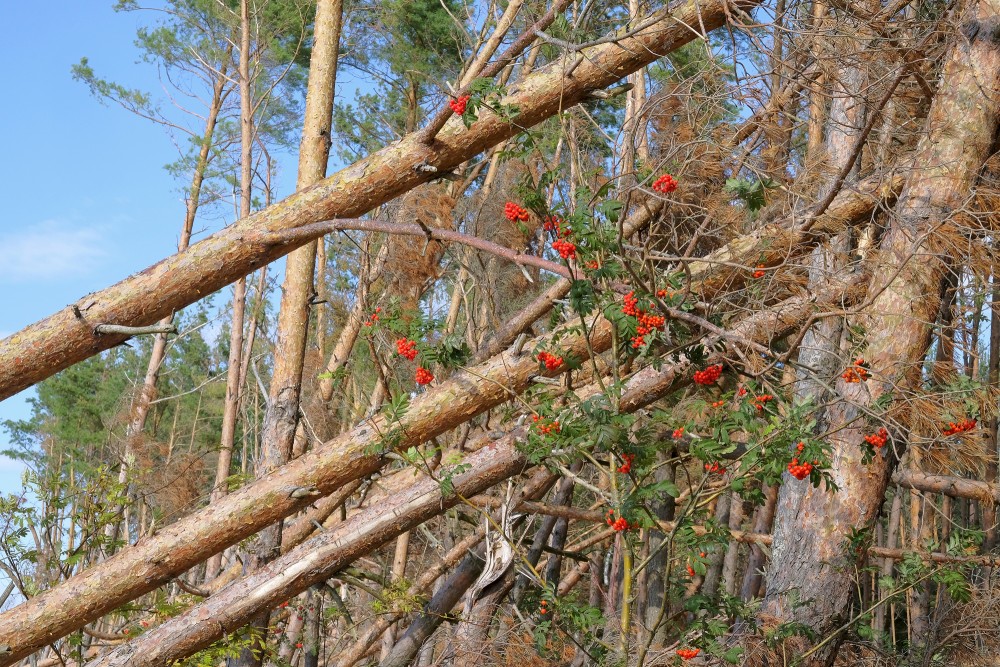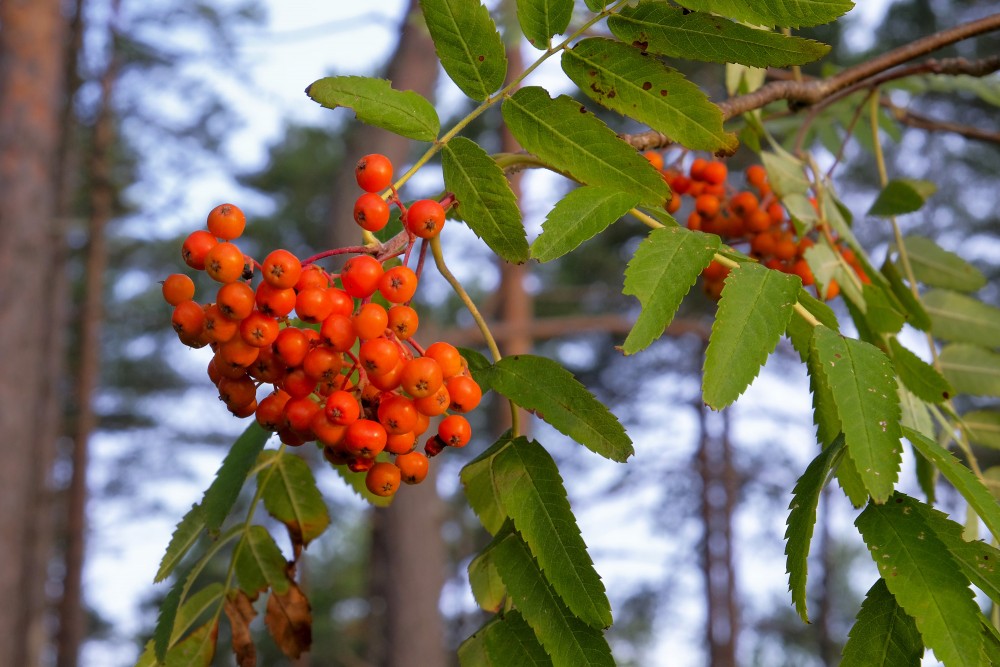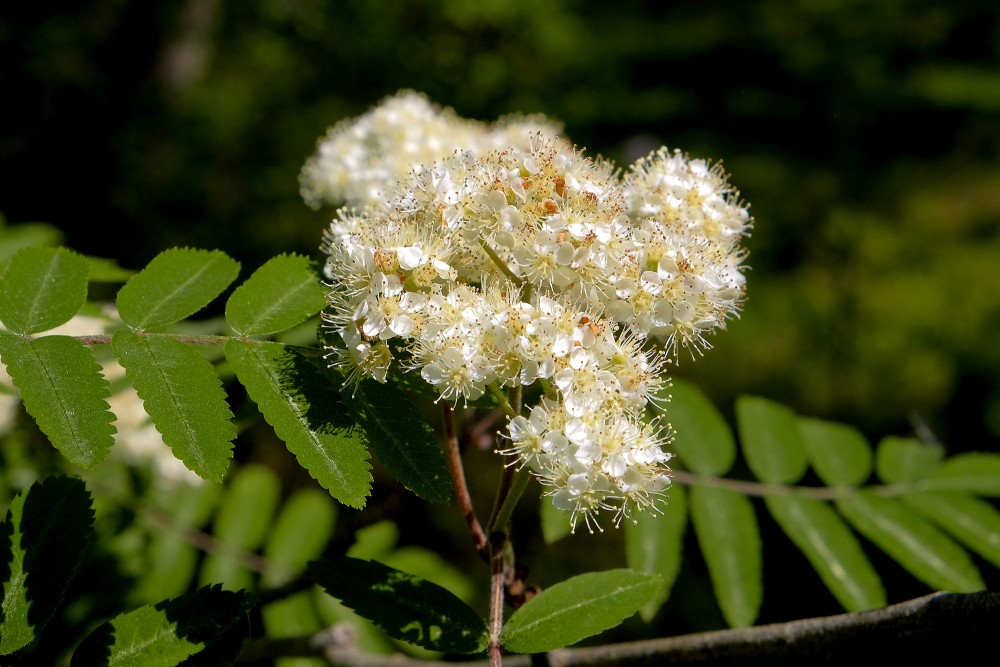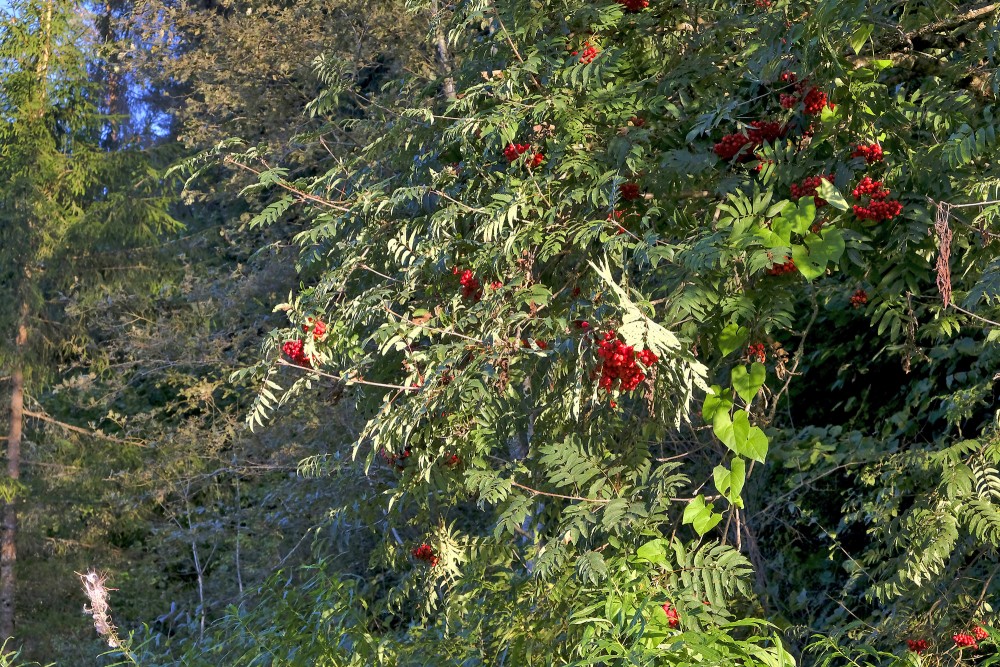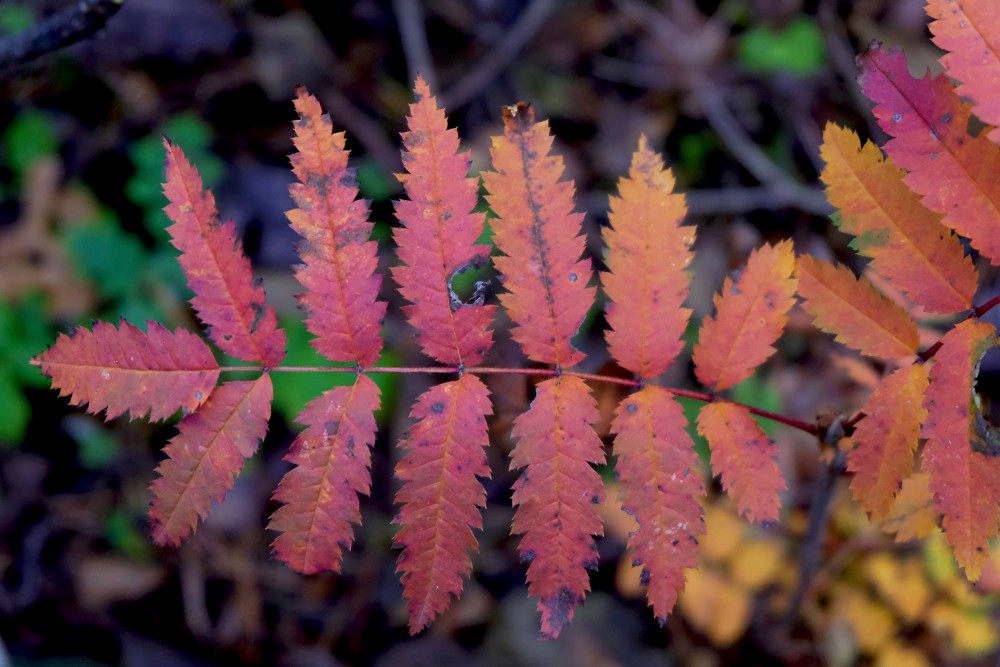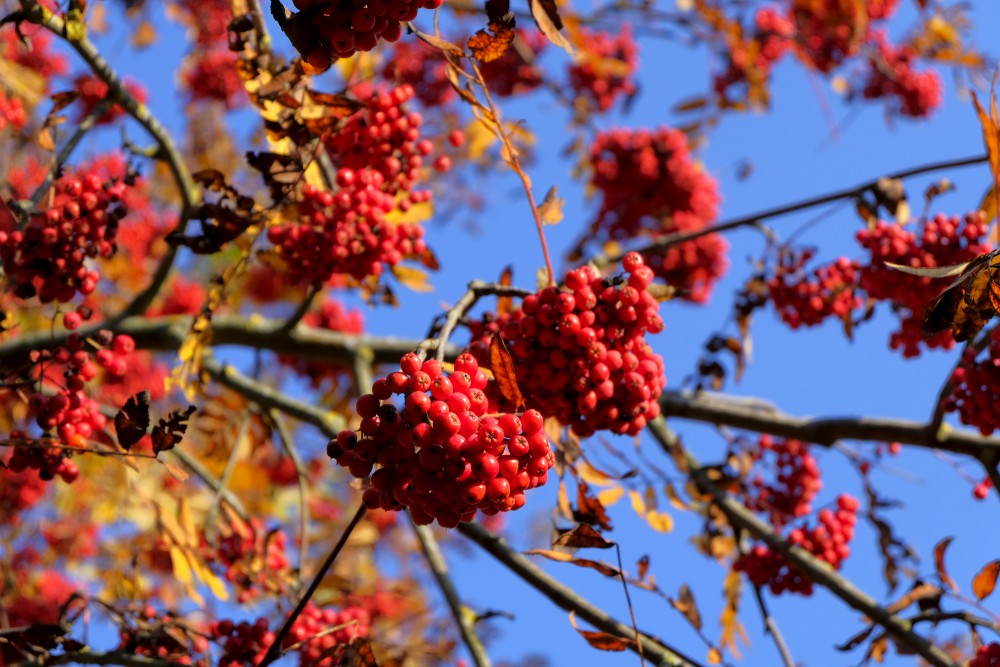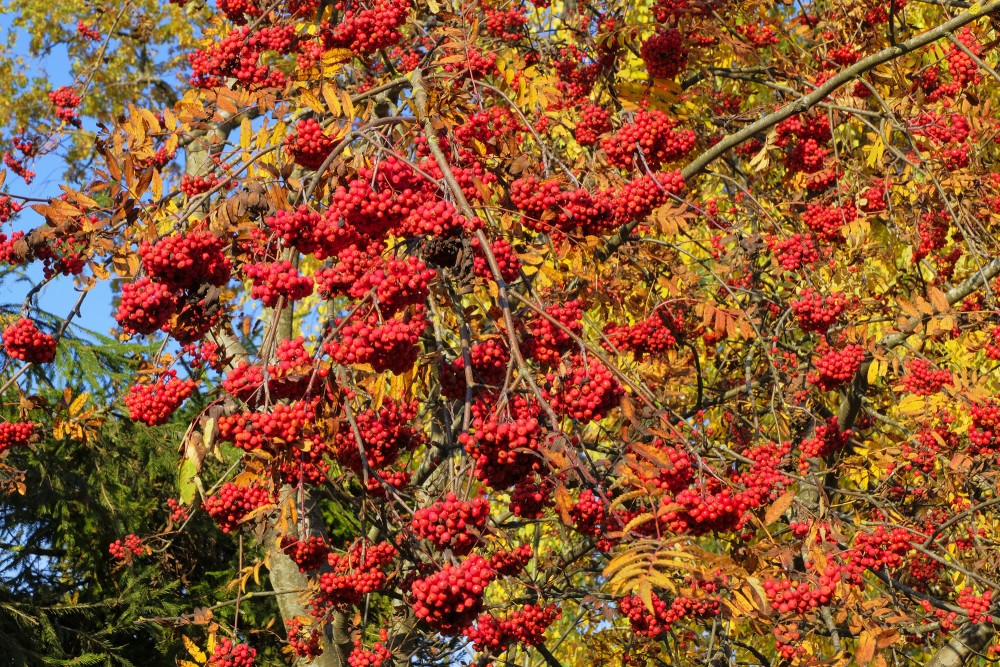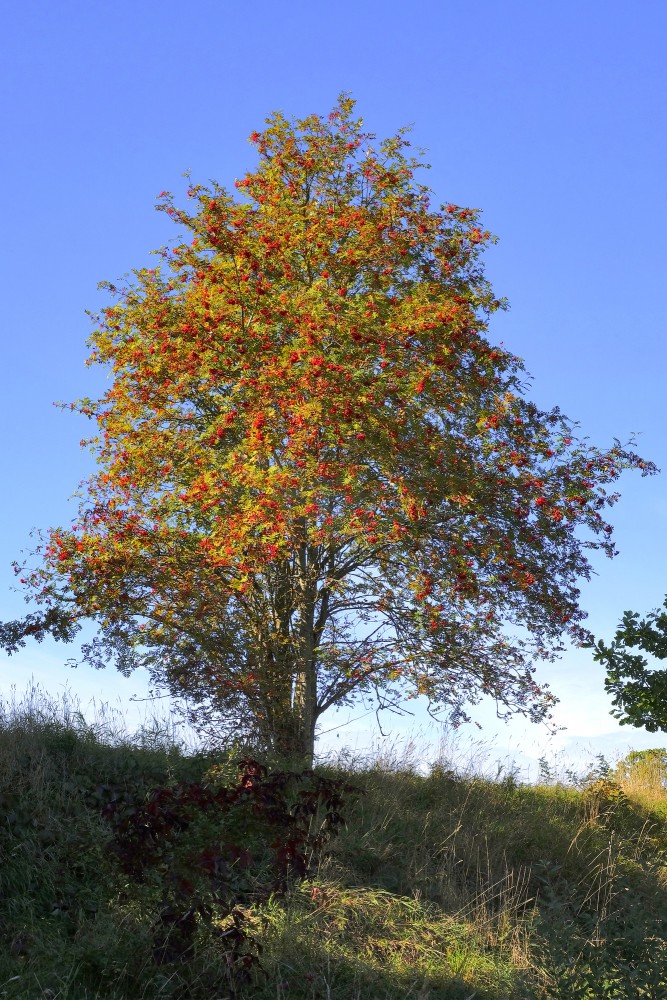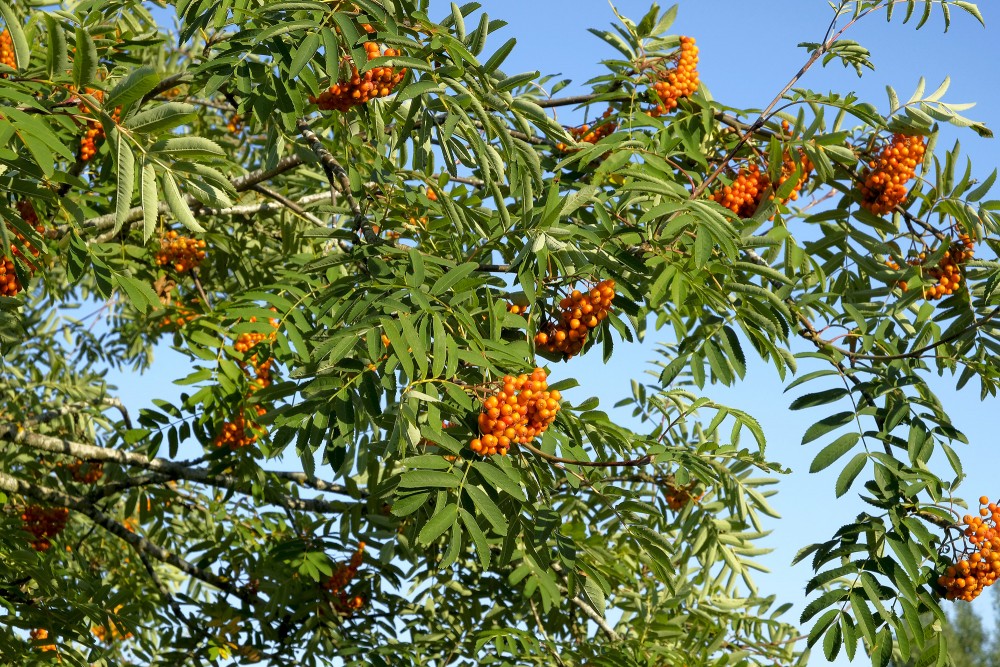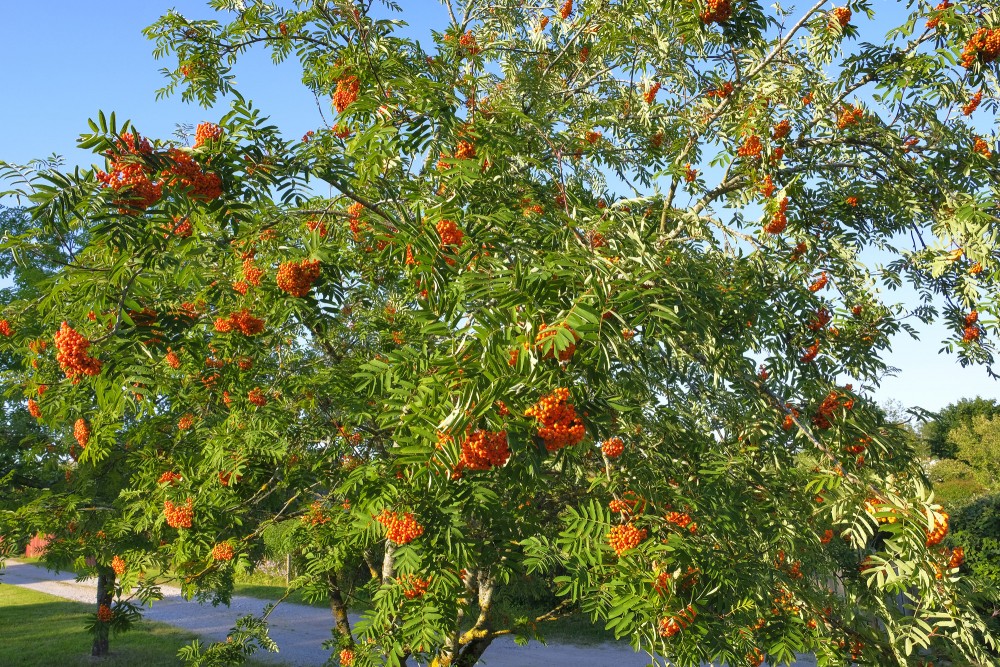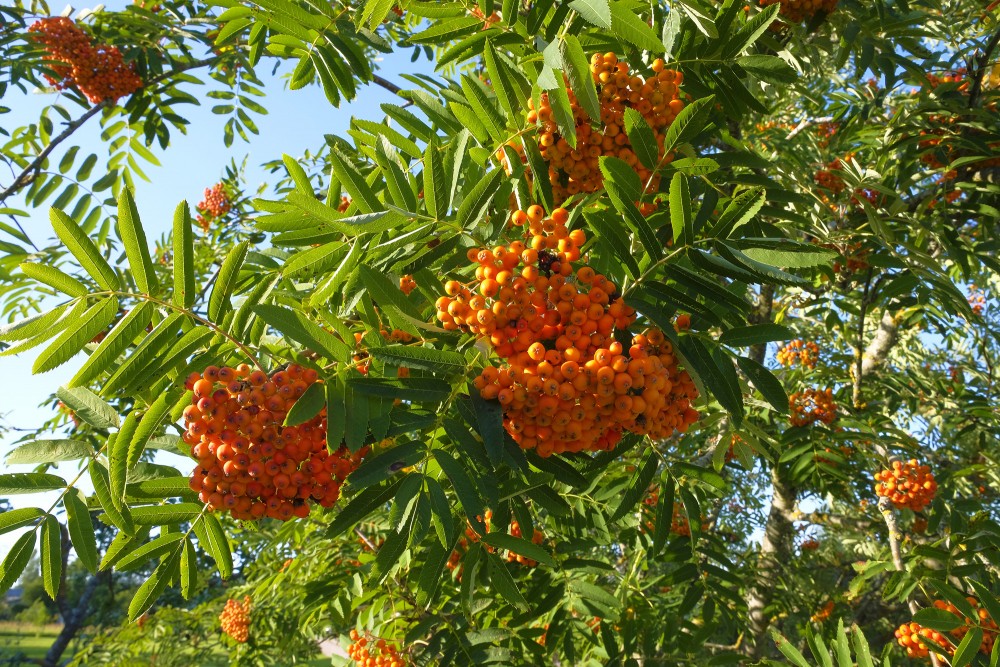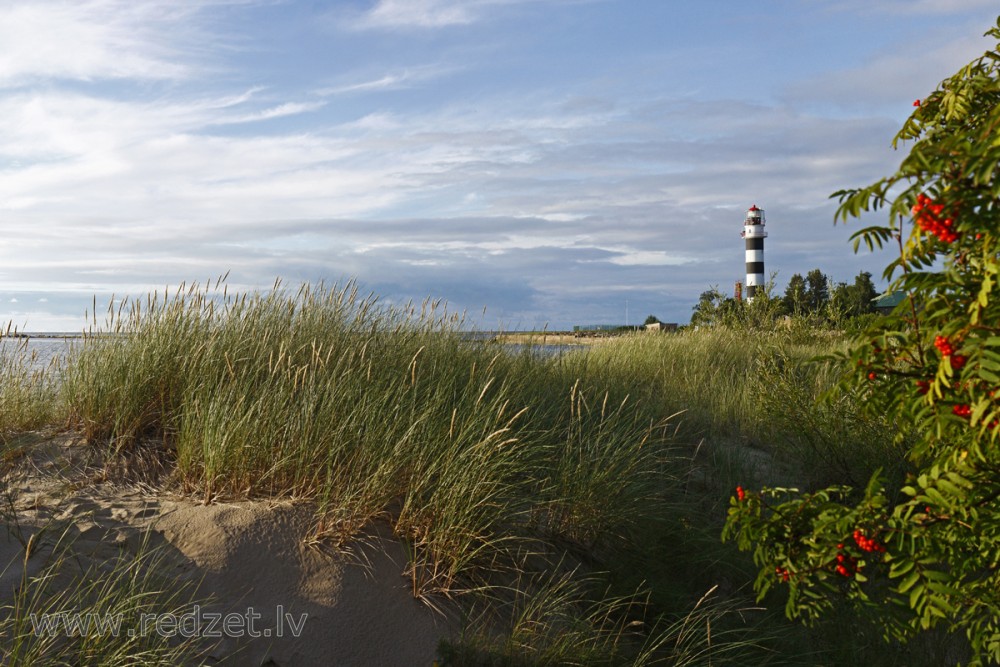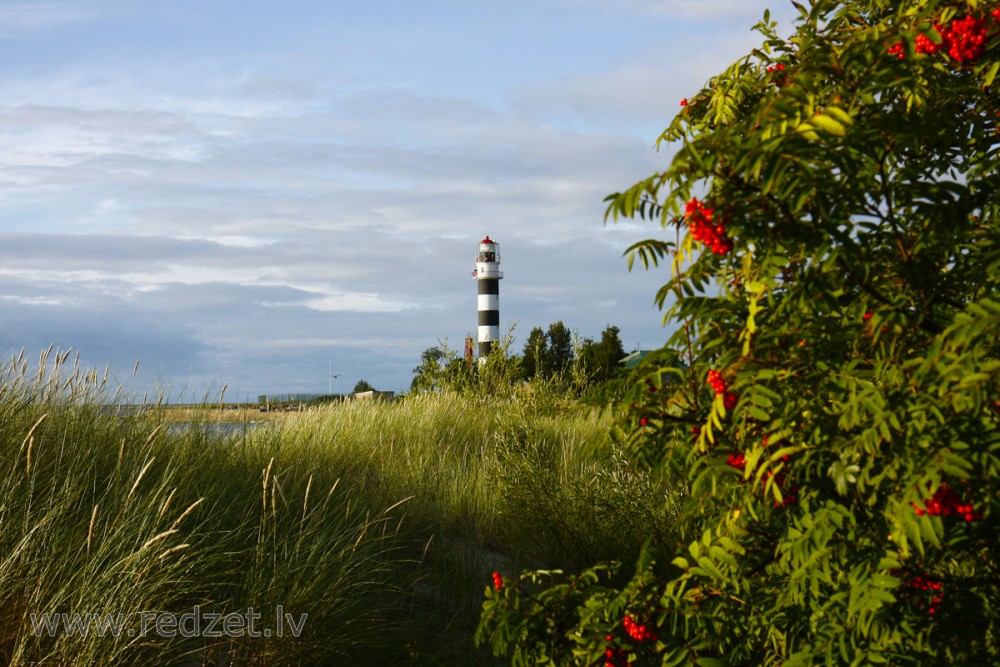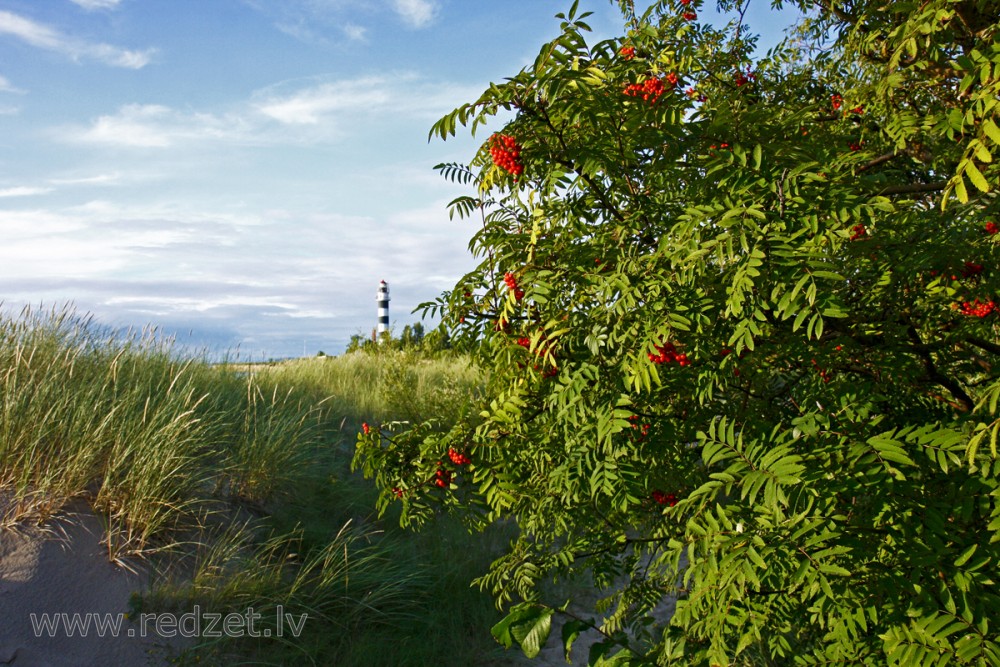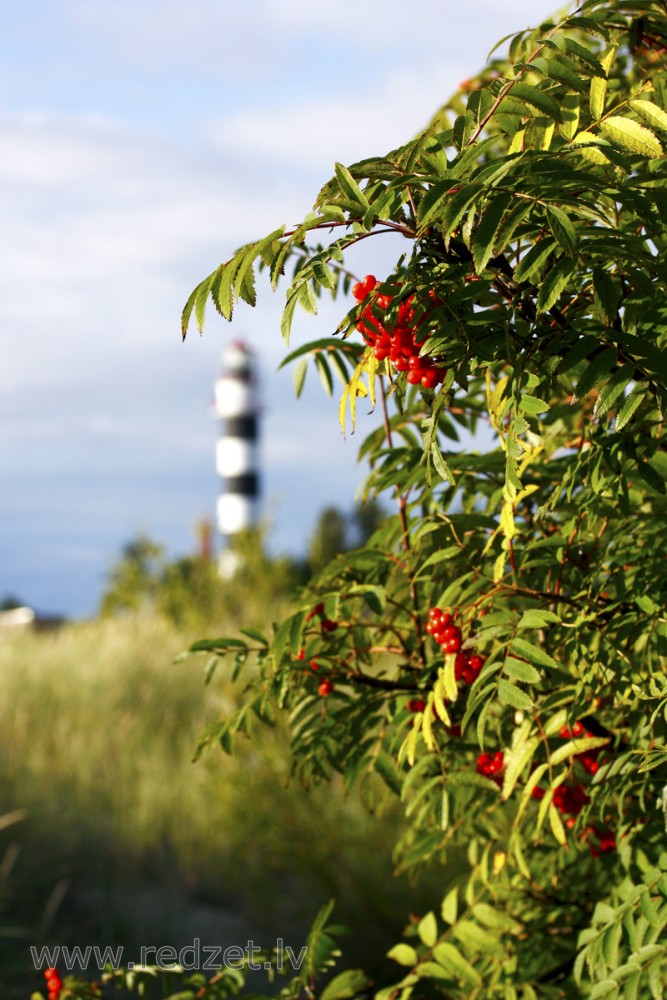Rowan (Sorbus aucuparia)
Sorbus aucuparia, commonly called rowan and mountain-ash, is a species of deciduous tree or shrub in the rose family. It is a highly variable species, and botanists have used different definitions of the species to include or exclude trees native to certain areas; a recent definition includes trees native to most of Europe and parts of Asia, as well as northern Africa. The range extends from Madeira and Iceland to Russia and northern China. Unlike many plants with similar distributions, it is not native to Japan.
S. aucuparia has a slender trunk with smooth bark, a loose and roundish crown, and its leaves are pinnate in pairs of leaflets on a central vein with a terminal leaflet. It blossoms from May to June in dense corymbs of small yellowish white flowers and develops small red pomes as fruit that ripen from August to October and are eaten by many bird species. The plant is undemanding and frost hardy and colonizes disrupted and inaccessible places as a short-lived pioneer species.
Fruit and foliage of S. aucuparia have been used by humans in the creation of dishes and beverages, as a folk medicine, and as fodder for livestock. Its tough and flexible wood has traditionally been used for woodworking. It is planted to fortify soil in mountain regions or as an ornamental tree and has several cultivars.
| Rowan | |
| Sorbus aucuparia | |
| Kingdom: | Plantae |
| Clade: | Angiosperms |
| Clade: | Eudicots |
| Clade: | Rosids |
| Order: | Rosales |
| Family: | Rosaceae |
| Genus: | Sorbus |
| Subgenus: | Sorbus subg. Sorbus |
| Species: | S. aucuparia |
Description
Sorbus aucuparia occurs as a tree or shrub that grows up to between 5 and 15 m in height. The crown is loose and roundish or irregularly shaped but wide and the plant often grows multiple trunks. A trunk is slender and cylindrical and reaches up to 40 cm in diameter, and the branches stick out and are slanted upwards. The bark of a young S. aucuparia is yellowish gray and gleaming and becomes gray-black with lengthwise cracks in advanced age; it descales in small flakes. Lenticels in the bark are elongated and colored a bright ocher. The plant does not often grow older than 80 years and is one of the shortest-lived trees in temperate climate. Wood of S. aucuparia has a wide reddish white sapwood and a light brown to reddish brown heartwood. It is diffuse-porous, flexible, elastic, and tough, but not durable, with a density of 600 to 700 kg/m3 in a dried state. The roots of S. aucuparia grow wide and deep, and the plant is capable of root sprouting and can regenerate after coppicing.
The compound leaves are pinnate with 4 to 9 pairs of leaflets on either side of a terete central vein and with a terminal leaflet. There are paired leaf-like stipules at the base of the petiole. The leaves are up to 20 cm long, 8 to 12 cm wide, and arranged in an alternate leaf pattern on a branch., distinguishing them from those of ash, Fraxinus excelsior, which are opposite and without stipules. The leaflets are elongated-lanceolate in shape, 2 to 6 cm long, and 1 to 2.5 cm wide with a sharply serrated edge, and have short stems or sit close to the central vein except for the outermost leaflet. Leaflets are covered in gray-silvery hairs after sprouting but become mostly bare after they unfold. Their uppers side is dark green and their underside is a grayish green and felted. Young leaflets smell like marzipan when brayed. The leaflets are asymmetrical at the bottom. S. aucuparia foliage grows in May and turns yellow in autumn or a dark red in dry locations.
Buds of S. aucuparia are often longer than 1 cm and have flossy to felted hairs. These hairs, which disappear over time, cover dark brown to black bud scales. The terminal buds are oval and pointed and larger than axillary buds, which are narrow, oval and pointed, close to the twig, and often curved towards it.
S. aucuparia is monoecious. It reaches maturity at age 10 and carries ample fruit almost every year. The plant flowers from May to June (on occasion again in September) in many yellowish white corymbs that contain about 250 flowers. The corymbs are large, upright, and bulging. The flowers are between 8 and 10 mm in diameter and have five small, yellowish green, and triangular sepals that are covered in hairs or bare. The five round or oval petals are yellowish white and the flower has up to 25 stamens fused with the corolla to form a hypanthium and an ovary with two to five styles; the style is fused with the receptacle. Flowers of S. aucuparia have an unpleasant trimethylamine smell. Their nectar is high in fructose and glucose.
Its fruit are round pomes between 8 and 10 mm in diameter that ripen from August to October. The fruit are green before they ripen and then typically turn from orange or scarlet in color. The sepals persist as a black, five-pointed star on the ripe fruit. A corymb carries 80 to 100 pomes. A pome contains a star-shaped ovary with two to five locules each containing one or two flat, narrow, and pointed reddish seeds. The flesh of the fruit contains carotenoids, citric acid, malic acid, parasorbic acid, pectin, provitamin A, sorbitol, tannin, and vitamin C. The seeds contain glycoside.
Sorbus aucuparia has a chromosome number of 2n=34.
en.wikipedia.org
